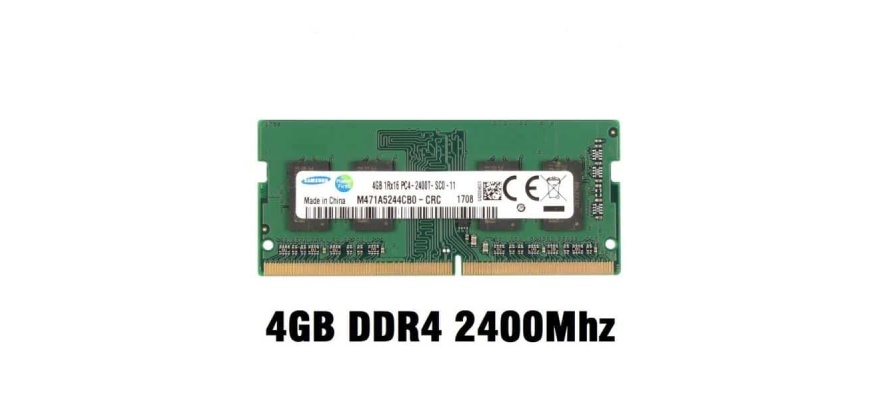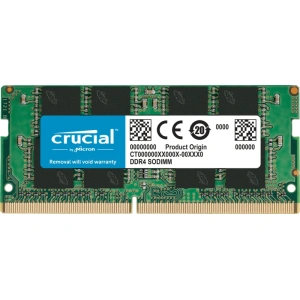Random Access Memory (RAM) is an essential component in any computing device, including laptops, desktops, servers, and MacBook Pros. RAM serves as the system’s short-term memory, providing a workspace for the processor to store and access data that is actively being used. Efficient management and upgrading of RAM can significantly impact the speed and performance of your computer.
Importance of RAM Upgrading and Replacement
Upgrading or replacing RAM is crucial for optimizing computer performance. Here’s a detailed look at when and why RAM upgrades might be necessary:
- Addressing Slow Performance Symptoms: If your computer exhibits sluggish response times, prolonged loading of applications, or frequent system freezes, it may be suffering from insufficient RAM. Such symptoms often arise when multiple applications are running simultaneously. Solution: Adding more RAM can resolve these issues. An increase in RAM allows the system to handle more data at once, reducing the reliance on slower storage devices like hard drives or SSDs. This results in a more responsive and faster computing experience. Benefit: With increased RAM, your computer can manage multiple tasks more efficiently, leading to smoother performance even under heavy workloads.
- Managing Increased Workloads Symptoms: Users working with large files or running memory-intensive applications (e.g., video editing software or large datasets) may experience system slowdowns or crashes if the available RAM is insufficient. Solution: Upgrading RAM helps manage these larger workloads. More memory facilitates faster processing of large files and smoother operation of demanding applications, minimizing lag and system crashes. Benefit: Enhanced RAM capacity ensures that large files and applications run efficiently, improving productivity and reducing user frustration.
- Enhancing Gaming Experience Symptoms: Gamers often face lag, stuttering, and long loading times when their system lacks adequate RAM. Modern games, which are increasingly demanding, require substantial memory to run smoothly. Solution: Upgrading RAM can significantly improve gaming performance. Sufficient RAM helps games run at optimal settings with fewer interruptions. Benefit: More RAM enhances game load times and performance, providing a smoother and more immersive gaming experience.
- Supporting Software Development and Multitasking Symptoms: Developers and power users who utilize virtual machines, development environments, or engage in data processing may find their systems lagging or unresponsive due to memory constraints. Solution: Adding more RAM allows these users to operate multiple virtual machines or development tools simultaneously without experiencing slowdowns. This is essential for tasks requiring substantial memory, like code compilation or large-scale data management. Benefit: Increased RAM supports intensive workflows and multitasking, enhancing efficiency and productivity for development and data processing tasks.
- Performance Enhancement and Multitasking Improvement Symptoms: Running several programs or resource-heavy applications might cause performance delays or difficulties when switching between applications. Solution: Upgrading RAM improves the system’s capacity to handle multiple applications at once, offering additional space for active data. This minimizes dependence on slower storage options. Benefit: Users experience smoother application switching and overall enhanced productivity and user experience.
- Future-Proofing Your Computer Symptoms: As software and operating systems evolve, they often demand more memory. A computer with insufficient RAM might struggle with newer software updates or applications. Solution: Upgrading RAM extends the lifespan of your computer by keeping it capable of handling new software and OS requirements. This proactive approach helps avoid early replacement and ensures compatibility with emerging technologies. Benefit: By upgrading RAM, you future-proof your computer, maintaining its relevance and functionality as software demands increase.
- Ensuring System Stability Symptoms: Insufficient RAM can lead to system crashes, freezes, and slowdowns, impacting productivity and user experience. Applications might fail to launch or operate correctly. Solution: Adequate RAM ensures system stability by providing enough memory for all active processes and applications, reducing the risk of crashes and freezes associated with memory shortages. Benefit: A stable system enhances productivity, reduces disruptions, and ensures a reliable computing experience.
Types of RAM for Different Devices
Understanding the different types of RAM available for various devices is crucial for selecting the right upgrade or replacement.
- Desktop RAM Types: Desktop RAM typically uses DIMM (Dual Inline Memory Module) form factors. Common types include DDR3, DDR4, and DDR5. Speed: Speed is measured in MHz (Megahertz). For instance, DDR4 RAM speeds range from 2133 MHz to 4266 MHz. Capacity: Desktops often support larger capacities, ranging from 8 GB to 64 GB or more, depending on the motherboard and system requirements.
- Laptop RAM Types: Laptop RAM uses SO-DIMM (Small Outline DIMM) form factors. Common types include DDR3L, DDR4, and DDR5. Speed: Laptop RAM speeds generally range from 2133 MHz to 3200 MHz, similar to desktop RAM but optimized for lower power consumption. Capacity: Laptops usually support less RAM compared to desktops, with capacities ranging from 4 GB to 32 GB.
- Server RAM Types: Server RAM often features ECC (Error-Correcting Code) technology and comes in DIMM and RDIMM (Registered DIMM) form factors. Common types include DDR3, DDR4, and DDR5. Speed: Server RAM speeds vary, with DDR4 speeds ranging from 2133 MHz to 2933 MHz. Capacity: Servers often require large amounts of RAM, from 16 GB to several terabytes, based on the server’s function and workload.
- MacBook Pro RAM Types: In many MacBook Pro models, RAM is soldered onto the motherboard, making post-purchase upgrades difficult. Available types include LPDDR3, LPDDR4X, and LPDDR5. Speed: Speed varies by model, with LPDDR4X reaching up to 3733 MHz. Capacity: Current MacBook Pro models offer RAM capacities from 8 GB to 64 GB.
Types of RAM: PC2, PC3, PC4, and More
Different generations of DDR (Double Data Rate) RAM have distinct characteristics:
- PC2 (DDR2): Older generation with lower speeds and higher power consumption. It is largely obsolete for new systems.
- PC3 (DDR3): Improved speed and efficiency over DDR2, but gradually being replaced by DDR4.
- PC4 (DDR4): Faster speeds, greater efficiency, and larger capacities compared to DDR3. Standard for most modern systems.
- PC5 (DDR5): Latest generation, offering even higher speeds and efficiency than DDR4. Emerging in high-performance systems and newer laptops.
Memory Speed (MHz)
RAM speed affects data processing speed:
- DDR3: 800 MHz to 2133 MHz.
- DDR4: 2133 MHz to 4266 MHz.
- DDR5: Starts at 4800 MHz and exceeds 6400 MHz.
Faster memory speeds can enhance performance but must be compatible with the motherboard and processor.
Cost of RAM Upgrading and Replacement
The cost of RAM varies based on type, capacity, and speed:
- Desktop RAM: 1,000 KES to 10,000 KES for capacities from 8 GB to 32 GB.
- Laptop RAM: 1,000 KES to 15,000 KES for capacities from 8 GB to 16 GB.
- Server RAM: 10,000 KES to several hundred thousand KES , depending on capacity and ECC requirements.
- MacBook Pro RAM: 5,000 KES to 10,000 KES, depending on model and capacity.
Available RAM for Common Brands
Replacement RAM is available for various brands:
- Dell: Offers RAM for desktops, laptops, and servers, including DDR3 and DDR4.
- HP: Provides RAM for HP desktops and laptops, covering both consumer and business models.
- Lenovo: Supplies RAM for ThinkPad laptops, desktops, and servers, including DDR3, DDR4, and DDR5.
- Asus: Offers RAM for Asus desktops and laptops, including high-performance models.
- Acer: Provides RAM for Acer laptops and desktops.
- Apple: For MacBook Pro, RAM is often soldered but some models allow upgrades with compatible LPDDR3 or LPDDR4X memory.
Where to Find RAM Upgrading and Replacement Services in Nairobi
In Nairobi, several locations offer RAM upgrading and replacement services:
- Luztech: Known for reliable RAM upgrades and replacements for laptops and desktops.
- Computer Village: A bustling electronics market with various shops specializing in RAM and computer components.
- Authorized Service Centers: For brands like Dell, HP, Lenovo, and Asus, authorized centers offer professional RAM replacement services.
- Local Repair Shops: Numerous local repair shops in Nairobi provide RAM upgrades and replacements. Look for shops with good reviews or recommendations.
Precautions When Upgrading or Replacing RAM
When upgrading or replacing RAM, consider the following precautions:
- Compatibility: Ensure the RAM is compatible with your system’s motherboard. Check specifications like type (DDR3, DDR4), speed (MHz), and maximum supported capacity.
- Static Electricity: Ground yourself before handling RAM to avoid static damage. Use anti-static wristbands or mats



